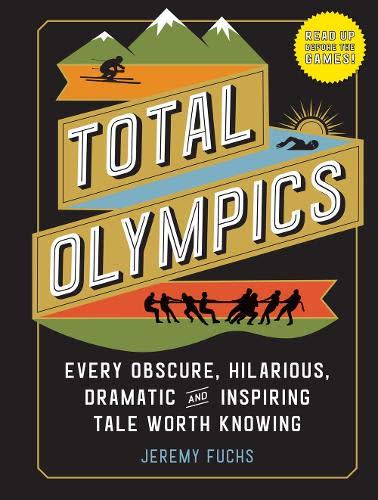Caeleb Dressel’s Olympics Are Over—Here’s How He Trained & Ate to Win 5 Gold Medals

- Oops!Something went wrong.Please try again later.
- Oops!Something went wrong.Please try again later.
After bringing home a whopping five gold medals for Team USA at the Tokyo Olympics, newfound fans are curious to know everything they can about Caeleb Dressel‘s diet and training regime.
The swimmer, who many are already hailing as the next Michael Phelps, won gold in five events at the Olympics in 2021. These kicked off with team wins during the Men’s 4×100 freestyle and medley relay races. But the swimmer’s solo races were really the ones to cemented his place as a crowd favorite, with the 24-year-old taking home the gold in the Men’s 50-meter and 100-meter freestyle races and 100-meter butterfly. Caeleb admitted these wins were the ones that meant the most to him, telling reporters at the time, “It’s a lot tougher. You have to rely on yourself, there’s no one to bail you out from a bad split.”
More from StyleCaster
Sorry, Caeleb Dressel Isn't Single--Meet His Wife & High School Sweetheart
10 Under $50 Ready-Made Halloween Costumes on Amazon That Actually Don't Suck
So, how did the Olympian train to win these “tougher” races? Keep on reading below for everything we know about Caeleb Dressel’s diet and training routine.
Caeleb’s breakfast of champions? Carbs.
In an interview with USA Today, Caeleb revealed that his breakfast of choice is something light and energy-fueling—a.k.a., any healthy carbs! “I never eat a lot before I get in the water because I don’t want to, you know,” he told the publication. “Anything with carbs is what I go for if it’s not a full meal.”
Click here to read the full article.
His favorite option? Oatmeal with honey. “I absolutely love honey,” he said in a blog for Team USA in 2019. “Or Wheaties,” he said, referring to the cereal. After breakfast, it’s off to his first practice of the day at around 8AM.
After his first practice, Caeleb fuels up with a snack.
After his two swimming sessions for the day—but before he hits the weight room—Caeleb always grabs a small snack to keep him going. “I try to get something small like chocolate milk or a bar,” he told USA Today. “Whatever bars they have in the weight room [at] a little fuel area.” Then, it’s off to weights.
As Caeleb described in his Team USA blog, he and his teammates warm up with a quick run before starting with weights.”Before every weight session we spend about 20 minutes stretching, foam rolling, and trigger pointing because a lot of areas get tight from swimming, and it’s really hard to do some of the Olympic lifts if we have tight shoulders and tight hamstrings,” he said.
He continued, “The majority of what I do in the weight room are cleans, power cleans and snatches. After that, we do some exercises to avoid shoulder pain, some medicine ball work and end it with a core set, about two hours’ worth of work right after swimming. It gets pretty tiring, but once you get used to the schedule, you find a good rhythm. I train with a really good group of guys, which makes it fun.”
Caeleb’s “lunches” are plenty—and balanced.
Understandably, Caeleb is usually pretty hungry after around two hours of swimming and another two hours of weight training. To start, the swimmer always grabs a balanced meal that includes protein, healthy carbs, fruits, and veggies before his afternoon swim practice.
Sometimes, lunch comes earlier or later—but he always makes sure to squeeze it in. “I still get three meals in, it’s just that my breakfast is late,” he explained to USA Today. “That’s why I have a bunch of those little snacks before. But sometimes, I’ll be done with weights, and it will be a late breakfast or an early lunch. And then I’ll eat again before I leave for afternoon practice, and then I’ll eat after afternoon practice.” Caeleb joked, “I’m kind of like a horse: I just kind of eat throughout the day, so I’m not ever hungry. I don’t want to go to practice hungry.”
The swimmer also takes some time after weight training to give himself a puppy break. According to his 2019 blog with Team USA, Caeleb likes to squeeze in some dog training with his black lab, Jane, before his afternoon practice: “After weights, I go home to train Jane,” he told the blog. “My dad’s a veterinarian, and I’ve grown up around animals my whole life. I love having a dog. I usually train her every day.”
By the time 3PM swings around, Caeleb is out the door for his second—and final—swimming session for the day. “We’re in the pool for two hours, and after that, it’s food time,” again, according to Caeleb.
Caeleb ends his day with a filling dinner.
After two more hours of swimming, Dressel is ready to “get food as fast as I can.” His dinner of choice? Meatloaf. “I love meatloaf so much,” he admitted to USA Today. Once he’s done eating his meatloaf—or whatever dinner he had that day—Caeleb likes to spend his time winding down and focusing on his mental health. “Evenings are my time to relax, unwind and recover from practice,” he explained in Team USA’s blog.
In his interview for USA Today, Caeleb adds, “Practice does take a lot out of me mentally because I have to be on it for every stroke, every turn, every breakout. Anything I do, I want to be as focused as I can, so by the time practice is done, I’m kind of physically and mentally fried. So I just want to go and not think about anything for maybe 30 minutes to an hour.” Some of Caeleb’s favorite activities to unwind include reading, journaling, playing video games—and, of course, spending time with his wife, Meghan Haila.
Total Olympics by Jeremy Fuchs

Buy: ‘Total Olympics’ by Jeremy Fuchs $9.99+
For more about the Olympics, check out Jeremy Fuchs’ 2021 book, Total Olympics: Every Obscure, Hilarious, Dramatic, and Inspiring Tale Worth Knowing. The book, which was called an “indispensable Olympic resource” and “pure fun” by The New York Times, follows the history of the Olympics, from how it began in a Victorian English town called Much Wenlock to the discontinued sports that are no longer around like tug of war, firefighting, painting and, yes, live pigeon shooting. The bestseller, which features hundreds of true tales and historical photographs, also includes stories from both internationally known and little known athletes like gymnast Shun Fujimoto, who led his team to victory with a broken knee.
Our mission at STYLECASTER is to bring style to the people, and we only feature products we think you’ll love as much as we do. Please note that if you purchase something by clicking on a link within this story, we may receive a small commission of the sale.
Best of StyleCaster


